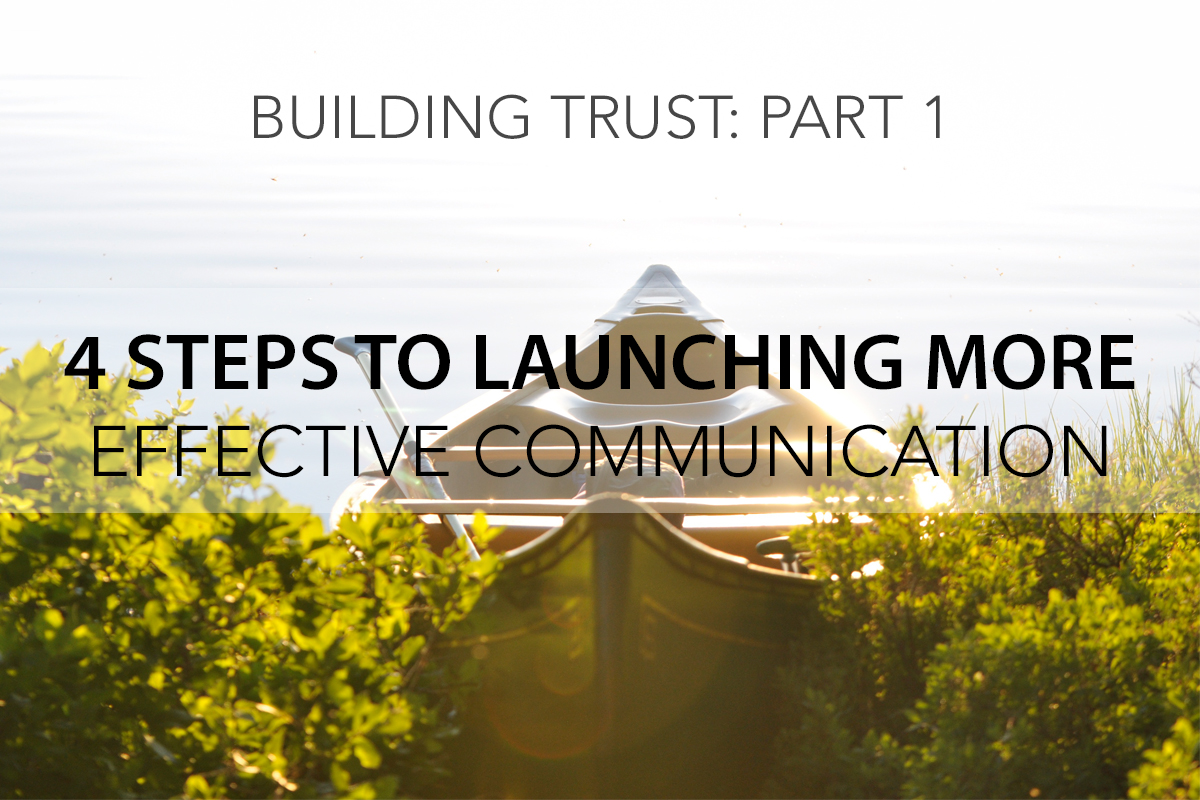If you ever feel work hours are far too many, emails and texts overwhelming, problems to solve never ending, and projects to complete ever growing, you are drowning! One fascinating thing about “drowning” in life is that it is often an element essential to life, just like water, that is killing you! Water is a good thing, but an unmanaged, excessive amount of it can literally bury you.
Read moreBuilding Trust Part 6: Consistency
People tend to trust people who show predictability or consistency. When someone is erratic or unpredictable, we are less likely to trust him or her. For example, if a supervisor is friendly and joking around one day, then the next day is angry and withdrawn, and another day is serious and reserved, people will develop a sense of uncertainty about this leader and begin to question their consistency.
Read moreBuilding Trust Part 5: Connectedness
Relationships play a vital role in building and maintaining trust. When people are relationally connected to one another, they have a greater opportunity to know what is happening in the lives of others, to manifest care and concern when needs are discovered, and to keep potential for conflict and misunderstanding to a minimum.
Read moreBuilding Trust Part 4: Competence
Competence is primarily concerned with an individual’s or organization’s capacity to perform a task or role with an acceptable level of proficiency.Sometimes people start in a position or role where they initially have the necessary competence to succeed. However, influences such as organizational growth, reduced personal energy level, personal problems, or cultural shifts can ultimately result in a decline in proficiency.
Read moreBuilding Trust Part 3: Concern
People tend to have confidence and trust in those who they perceive show authentic concern for them. In Philippians 2, Paul explains how we should imitate Christ in our actions and attitudes, including demonstrating concern for others.
Read moreBuilding Trust Part 2: Character
Character refers to a person’s intrinsic value system and external actions. Areas often associated with character are honesty, fairness, and hard work. Character is the second value we are focusing on to build trust because the way others perceive your character will effect how much they trust you. Below are four ways to help you form good character and earn the trust and respect of those around you.
Read moreBuilding Trust Part 1: Communication
The 6 Trust Gauges to the right graphically describe how trust works among people and in organizations. All people have expectations of themselves and others, but they may not be understood, agreed upon, or fair. These expectations fall into one or more of the following categories: communication, character, concern, competence, connectedness, and consistency. Trust is built when we prove reliable by meeting the expectations others have of us in these six areas.
Read more6 Ways to Scorch Organizational Vision and Momentum
One of the most important things we have learned about organizational momentum is just how fast it can change. Organizations were once much more resilient to large and rapid fluctuations of momentum than they are today.
Read more2 Tips to Help Your Board Flow Smoothly
Mention “board” to many leaders today, and their first thoughts are often negative, using words like – slow, bureaucratic, boring, sluggish to change, controlling and inflexible. While we have found this not to be true with many of the organizations we have served, it is important to remind board members that there has been a shift in how boards need to look and function.
Read moreCreating a Compelling Vision
Often referred to as a preferred future, a compelling vision is a short descriptive picture of what your organization is aiming for. Some books will tell you that you need to have a mission statement and a vision statement. Don’t believe it. While there can be a difference between the two (mission describes your reason for existence whilevision describes your future) and there is nothing wrong with having both of these statements, there are plenty of successful organizations that work off of one unifying description of why they exist and where they are going.
Read more10 Steps to Rebuild Broken Trust
When trust is broken, either for reasons of unethical behavior or due to differing expectations, the results are disappointment, hurt, and anger. It is very easy to respond by not wanting to trust again or invest the time and energy necessary to rebuild the lost trust. However, this only results in embedding unhealthy feelings and behaviors into the organization’s culture. To get your organization healthy again, it's important to begin rebuilding trust as soon as possible. Easier said then done. Here are 10 steps to get you started.
Read more5 Things Your Employees Need from You
Our last blog post was on the 5 things team leaders need from their team members. However, a relationship is not a one way street. Those team members also have unspoken needs that their boss has to fulfill in order for them to perform to their highest effectiveness.
Read more5 Things Your Boss Needs from You
If expectations aren't clear, sometimes it is really hard to know what your boss wants. But even if your leader is a great communicator, there are still some unspoken things that he/she expects from you.
Read more7 Key Factors to Keeping Your Credibility Bank Full
Bankruptcy. It’s a sad trend in today's’ culture, and it is growing at an alarming rate. We usually equate it with financial failure, but there are other types of bankruptcy. Financial fortune can be reversed, but once our credibility has been lost, it becomes difficult, if not impossible, to regain.
Read moreThe 4 Trends Affecting Your Board of Directors
There are estimated to be about 1.5 million non-profit organizations in the United States and over 330,000 churches with a combined annual budget of over $800 billion dollars. Each of these has, or should have, a board of directors. If each board only had nine members, that would mean there are almost 16,500,000 board members of non-profit organizations in the United States! That is a lot of people, a lot of responsibility and a lot of time being invested.
Read more3 Ways to Not Get Burnt by Expectations
All people have expectations of themselves and others. The expectations that are held may not be understood, agreed upon, or even fair.
These expectations fall into one or more of the following six categories: communication, character, concern, competence, connectedness, and consistency. Trust is built when we prove reliable by meeting the expectations others have of us in these six areas, but we can't gain someone's trust if we don't know what they expect. It's a viscous cycle.
Read moreWinter
It's dark when I get up and when I get home. Bitter cold, ice, and snow make regular appearances. The fire pit, grill and fountain are dormant along with plants that were once green and flowering. It's winter. I have stopped questioning people who go south for the winter. I now get it! In his book Spiritual Rhythm, Author Mark Buchanan talks about the role of each season in our spiritual lives.
Read moreThreats or Affirmation?
Threat of significant consequences for not meeting requested performance standards is all too often the primary motivator used by leaders.
Read moreDisillusionment. Discouragement. Despair.
Disillusionment. Discouragement. Despair. All three words have a few things in common.
Read moreThe Hero & His Bag Of Tricks
Did you ever notice how, many people when taking on the role of the new leader of an organization, sometimes try too hard to show they are the boss?
Read more




















